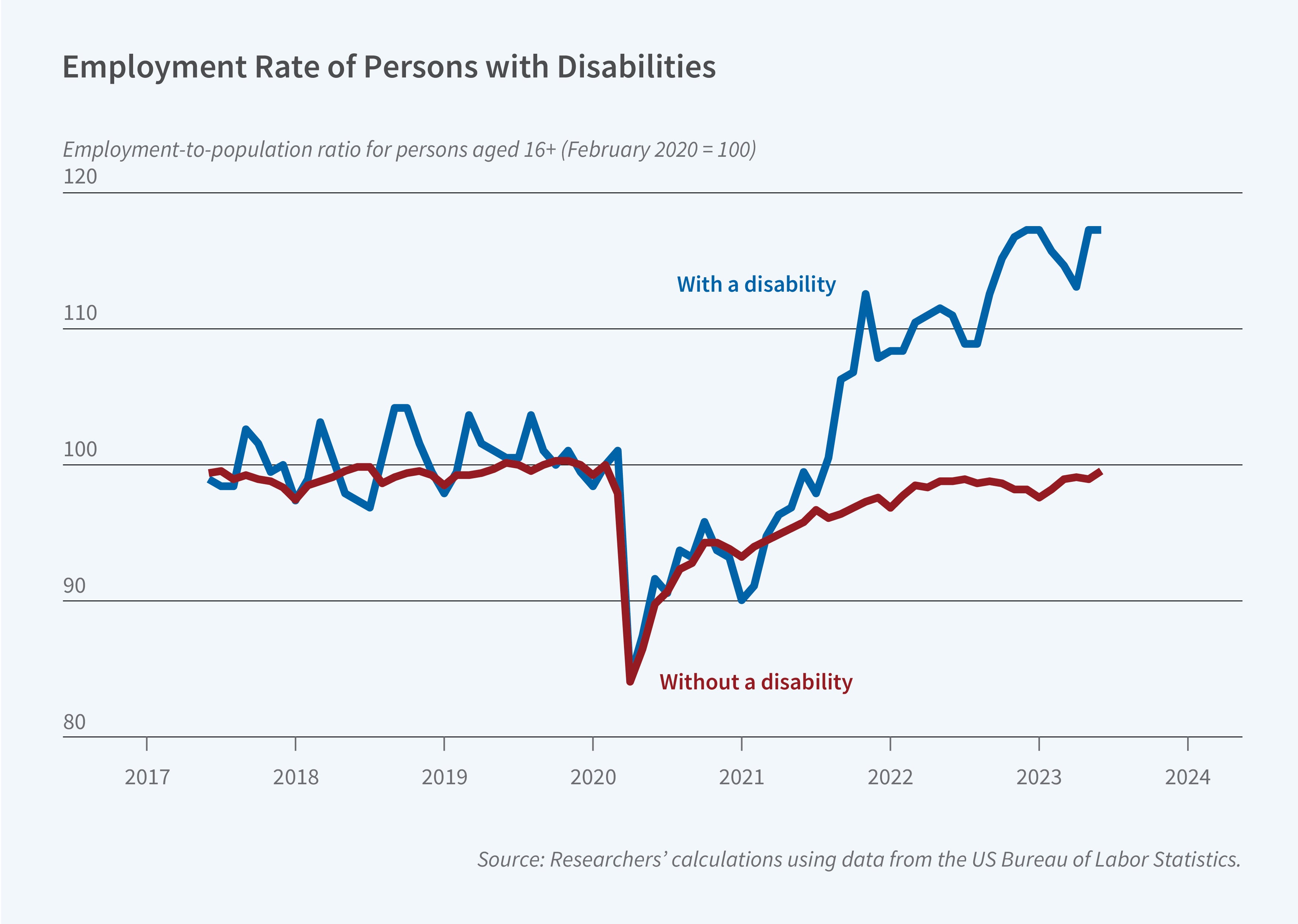Evolving Disability Reporting Patterns and Employment Dynamics During COVID-19

During the pandemic, employment rates among people with disabilities (PWD) showed surprising resilience, even surpassing pre-pandemic employment levels in March 2022. This phenomenon raised important questions about the relative role of improved workplace accessibility and changes in disability reporting patterns.
In COVID-19 Pandemic Effects on the Composition of the Population with Disabilities (NBER RDRC Paper NB23-03), researchers Otávio Bartalotti, Steven Dieterle, and Brent Kreider examine shifts in disability reporting patterns and their relationship to employment outcomes. Using data from the Survey of Income and Program Participation (SIPP) and the Social Security Administration’s Disability Analysis File Public Use File (DAF PUF), they document significant compositional changes in the PWD population after March 2020.
Rising post-pandemic employment rates among people with disabilities were driven, in part, by compositional changes in disability reporting. Those who started reporting disabilities during the COVID-19 pandemic tended to have stronger pre-pandemic employment histories than those who reported disabilities before the pandemic.
The authors find that the share of individuals reporting a disability increased, with new PWD reporters exhibiting stronger pre-pandemic labor force attachment than the typical person joining the PWD ranks before COVID-19. Most notably, there was a substantial rise in cognitive and mental health disability reports in the aftermath of the pandemic’s early stages, resulting in a compositional shift toward those with higher pre-pandemic employment rates among that group.
While there was an increase in the number of individuals who report a disability working remotely at least part-time in 2020, the increase was smaller than for those not reporting a disability. Furthermore, while the share of non-PWD workers in telework-amenable occupations rose during the pandemic, it declined among PWD workers. This finding suggests that the PWD population was not the primary beneficiary of structural changes favoring remote work.
Observed improvements in PWD employment rates were partly a reflection of changes in who identified as disabled rather than the result of enhanced workplace accessibility. The study underscores how the pandemic may have affected disability reporting through multiple channels, including potential direct effects of COVID-19, increased mental health challenges, and evolving social norms around disability disclosure.
The research reported herein was performed pursuant to grant RDR18000003 from the US Social Security Administration (SSA) funded as part of the Retirement and Disability Research Consortium. The opinions and conclusions expressed are solely those of the authors and do not represent the opinions or policy of SSA, any agency of the Federal Government, or NBER. Neither the United States Government nor any agency thereof, nor any of their employees, makes any warranty, express or implied, or assumes any legal liability or responsibility for the accuracy, completeness, or usefulness of the contents of this report. Reference herein to any specific commercial product, process or service by trade name, trademark, manufacturer, or otherwise does not necessarily constitute or imply endorsement, recommendation or favoring by the United States Government or any agency thereof.


